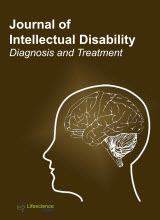jiddt
|
|
Abstract: Purpose: To study the effects of physical training on behavior and balance issues in elderly people afflicted with Alzheimer’s disease. Method: Forty patients (average age: 80 years old) participated in the study. The individuals were placed into two groups: a control group, which did not participate in any kind of training, and a trained group, which followed an eight-week training program. The training program comprised 2–3 sessions of light physical activity or walking per week; each session had an average duration of 15–55 min. Before (T1) and after (T2) the training program, an assessment of the psychical, psychological, physical, and functional parameters was conducted. Results: Upon completion of the physical training program, there was a significant (p < 0.05) improvement in the Tinetti test (T1: 19.5 ± 4.2 s; T2: 20.1 ± 4.1 s), a significant decrease in the completion time of the “get up and go” track for all of the participants (T1: 23.1 ± 8.1 s; T2: 19.5 ± 6.1 s), and a significant reduction in the seriousness of the behavioral issues observed. Conclusion: This preliminary study revealed that physical training had an overall beneficial impact on Alzheimer’s patients, especially on their behavior and balance. Keywords: Elderly people, physical activity, behavior, balance. Download Full Article |
|
|
Abstract: The number of studies addressing the latent structure of specific screening and diagnostic tools for autism spectrum conditions is still limited. The current study explored the latent structure of the Bulgarian CAST (Childhood Autism Spectrum Test) in screening for autism in the Bulgarian population. The data were analysed using factor analyses. A hierarchical model with two primary factors yielded best data fit. This structure is consistent with the two main categories adopted in the DSM-5 and current accounts of the range of conditions broadly falling into two main clusters of symptoms. These results confirm the validity of CAST as a tool for screening for autism spectrum conditions in other cultures and support the construct validity of the model and criteria included in the DSM-5. Furthermore, our results demonstrate how factor analysis can be exploited to reveal the underlying structure of screening tools aimed at capturing the behavioural traits of deficit phenotypes. Keywords: Autism, screening tests, factor analysis, factor structure, latent structure Download Full Article |
|
|
Editorial Download Full Article |
|
|
Abstract: This article presents a study where the overall objective is to measure any changes found as a result of the application of a program to facilitate the development of the semantic memory of people with Level 1 Autism Spectrum Disorder, following the implementation of a specific program to facilitate the creation of conceptual categories. The study, based on a quasi-experimental design, analyzes the effectiveness of the program designed around four cognitive variables, comparatively observed in three groups of participants (N:19), distributed across one experimental group (N:7) and two control groups (made up of 7 and 5 participants respectively), conducted over three successive measures, 1 pre-test and 2 post-test measures at 6-month intervals. The results, found by repeatedly testing measures of intra-subject effects, show the effectiveness of the designed program, as it has aided in the development of meaningful learning for the members of the experimental group. Keywords: Autism Spectrum Disorder, semantic memory, concepts, categories. Download Full Article |
|
|
Abstract: Increased prevalence of Autism Spectrum Disorder (ASD) has generated higher special needs enrollment in schools requiring teachers and therapists to acquire, incorporate and implement specialized strategies needed to address unique educational and behavioral challenges facing children diagnosed with ASD. Budget cuts have generated a shortage of qualified professionals with expertise in autism interventions. Currently, staff training is minimal, ineffective or lacking on how to do acquire these skills. More effective staff training may provide an avenue for addressing this shortage. This study investigates the impact that an Interprofessional Staff Training Procedure (STP), consisting of Video Self‐Monitoring (VSM), Performance Feedback (PF) and Reflection (R) with and without Mentoring has on sustained and generalized teacher performance on two Dependent Variables – application of the Learn Unit (LU) and Rate of Effective Instruction (ROI). An exploratory study was conducted with 10 female teachers instructing 3‐5 year old autistic children in two private schools utilizing principles of Applied Behavior Analysis. Teacher performance on LU and ROI was evaluated after: Phase 1 – 2‐hour workshop; Phase 2 – training period using STP with and without Mentoring and Phase 3 – follow‐up period when STP and Mentoring are removed. While the STP appeared to enhance teacher performance and sustainability of procedural integrity, the greatest and most consistent improvement in performance was observed among teachers who received STP plus Mentoring as opposed to STP alone. Findings revealed that adding Mentoring to an existing STP appears to enhance teacher performance and Procedural Integrity with sustainable outcome. Keywords: Training, mentoring, Autism Spectrum Disorders, teacher training, video self‐monitoring.Download Full Article |



